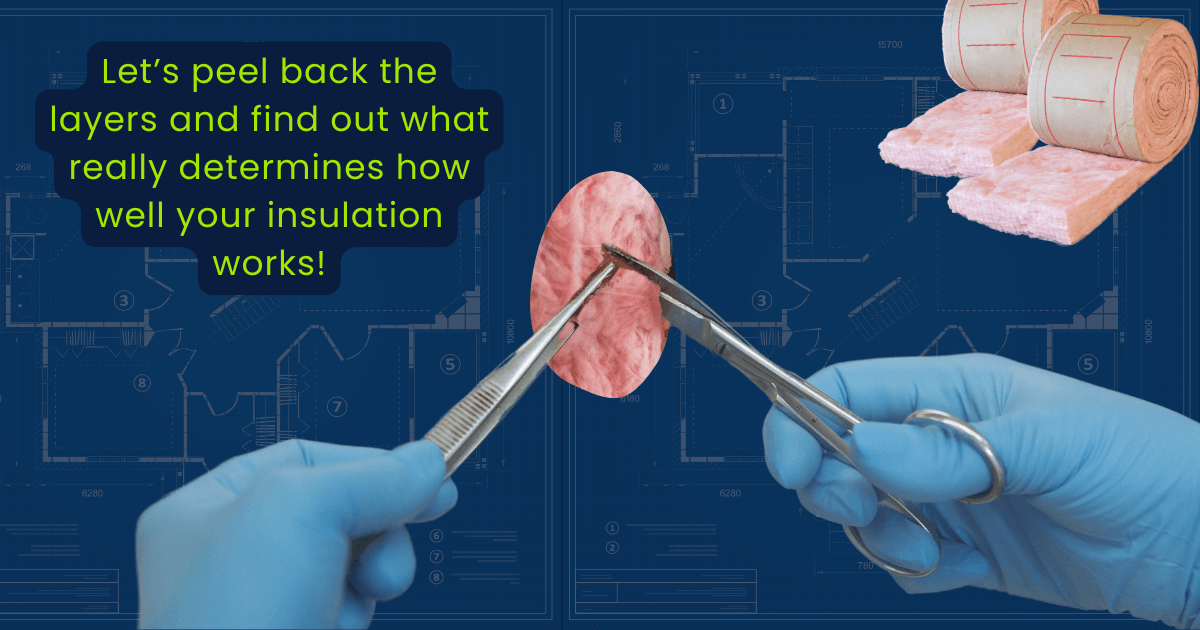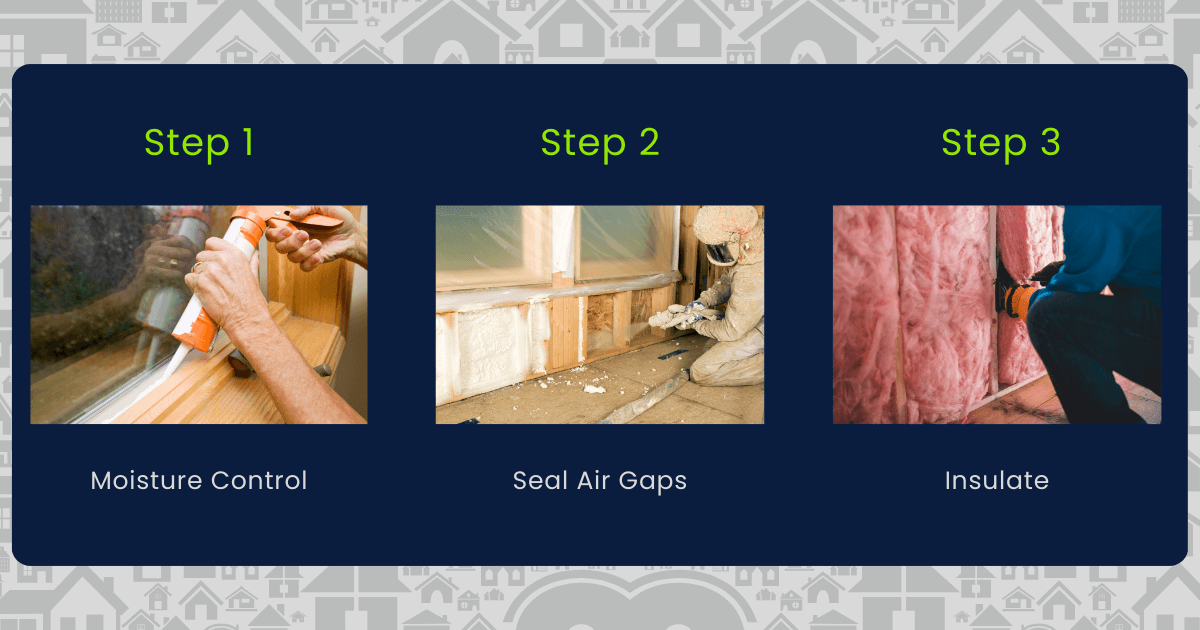Insulation Performance Factors: What Really Determines Your Home's Energy Efficiency
Are your heating and cooling costs making you consider selling a kidney to pay the energy bill? You're definitely not alone! While most homeowners know that insulation helps lower those pesky bills, there's a whole world of insulation performance factors beyond just the R-value that can make the difference between a cozy, affordable home and a money pit.
Let's peel back the layers (kind of like insulation itself!) and discover what really determines how well your home's "winter coat" actually works.
The R-Value Obsession: Only Part of the Story
We've all heard about R-value - it's like the celebrity of the insulation world. Everyone talks about it, but few people understand what's happening behind the scenes. R-value measures thermal resistance, indicating how well insulation reduces heat flow. Higher values mean better insulation performance, right?
Well, sort of.
Think of R-value like a football team's star quarterback. Important? Absolutely! The complete picture of success? Not even close.
An uninsulated wood frame wall might have an R-value of R0, while an insulated one could reach R13 or higher. But here's the kicker: two homes with identical R-value insulation can perform dramatically differently depending on these often-overlooked factors.
The Silent Performance Killers: Air Leaks and Installation Quality
You could install the highest R-value insulation money can buy, but if your home has air leaks, it's like wearing a designer coat with giant holes in it – pretty useless!
The Air Leak Epidemic
Air leaks around your home act like tiny energy vampires, sucking out your heated or cooled air faster than your heating system or cooling system can replace it. Common culprits include:
Gaps around drill holes from previous renovations
Poorly sealed joints between wall cavity and exterior siding
Penetrations in the attic floor for wiring or plumbing
Incomplete sealing around windows and doors
Did you know? A home with just a 1/16-inch gap around a standard exterior door loses as much energy as a 2.5-inch hole in your wall! That's right – all that expensive heat you're generating is flowing right outside to warm up the neighborhood squirrels.
Installation: Where Good Insulation Goes to Die
Remember Bob from next door who decided to DIY his attic insulation project? Three months later, he couldn't figure out why his energy bills were higher than before! Here's why proper installation matters:
Compression kills performance: Squeezing insulation reduces its effective R-value by up to 50%
Gaps and voids: Even small uncovered areas can reduce overall performance by 25-40%
Thermal bridging: When insulation doesn't completely cover framing, heat highways form
Poor air sealing: Insulation works best when paired with proper air barrier techniques
The truth is, an empty wall cavity properly filled with blow insulation by professionals often outperforms a higher R-value product installed poorly.
Moisture: The Invisible Insulation Destroyer
Water and insulation go together like peanut butter and motor oil – they don't! Yet moisture issues remain one of the most overlooked insulation performance factors.
Moisture can:
Reduce R-value by up to 40% when insulation gets damp
Create conditions for mold growth and structural damage
Make your insulation heavy and compressed, further reducing effectiveness
Turn your attic into a science experiment gone wrong
When Bob's neighbor Larry (who wisely called Argyle Bros Insulation) had his home insulated, the team didn't just add insulation – they addressed moisture sources and added proper vapor barriers. Two years later, Larry's insulation is performing like new while Bob's is... well, let's just say Bob's new hobby is researching mold remediation.
The Full-House Approach: Why Some Areas Matter More
Insulating your home is a bit like frosting a cake – you need complete coverage, but some spots need extra attention. The biggest bang for your buck often comes from:
Attic floors: Up to 30% of your home's heat loss happens here
Exterior walls: Especially important on the north and west sides in cold climates
Floors over unheated spaces: Think basement ceilings or rooms over garages
Rim joists: These often-forgotten perimeter areas are major air leak culprits
When upgrading insulation, don't just think about adding more everywhere. A strategic approach focusing on these key areas often proves more cost-effective than a blanket approach.
Beyond the Blanket: Innovative Insulation Approaches
The insulation world isn't just about stuffing pink fluff into your walls anymore. Modern approaches to enhancing insulation performance include:
The Air-Sealing Revolution
Before adding insulation, smart homeowners seal air leaks first. This approach can boost the effectiveness of even moderate R-value insulation by preventing warm air from bypassing it altogether.
The Hybrid Approach
Combining different insulation types can maximize advantages while minimizing drawbacks:
Spray foam at critical junctions for air sealing
Fiberglass or cellulose in larger cavity areas for cost control
Rigid foam on exterior walls for thermal break performance
The Deep Energy Retrofit
For the ultimate performance, some homeowners are adding exterior insulation during new siding installation. This approach:
Creates a continuous insulation layer outside the sheathing
Eliminates thermal bridging through wall studs
Allows for maximum R-value without enlarging wall thickness inside
Protects the house structure from temperature extremes
Measuring Real-World Performance
So how do you know if your insulation is actually performing well? Look for these indicators:
Consistent temperatures: No more cold spots or rooms that never seem warm enough
Reasonable heating and cooling costs: Bills that don't cause heart palpitations
Quick temperature response: Your home heats up or cools down efficiently when you adjust the thermostat
Low humidity issues: Fewer condensation problems on windows and less static electricity
Quiet interior: Good insulation also dampens outside noise
The Bottom Line: Insulation Performance Beyond the R-Value
When it comes to insulation performance factors, R-value is just the beginning of the story. For truly effective insulation:
Seal before you insulate: Address air leaks in the empty wall cavity and around penetrations
Focus on installation quality: Even moderate R-value insulation installed perfectly outperforms high R-value insulation installed poorly
Control moisture: Proper vapor barriers and ventilation protect your insulation investment
Think strategically: Prioritize high-impact areas like the attic floor and exterior walls
Consider the whole system: How your insulation, air barriers, and heating/cooling systems work together matters more than any individual component
Ready to make your home more comfortable while slashing those energy bills? Give us a call at Argyle Bros Insulation. We don't just install insulation – we create high-performance building envelopes that keep you comfortable year-round.
Because when it comes to insulation, it's not just what you use – it's how it all comes together that makes the real difference!





